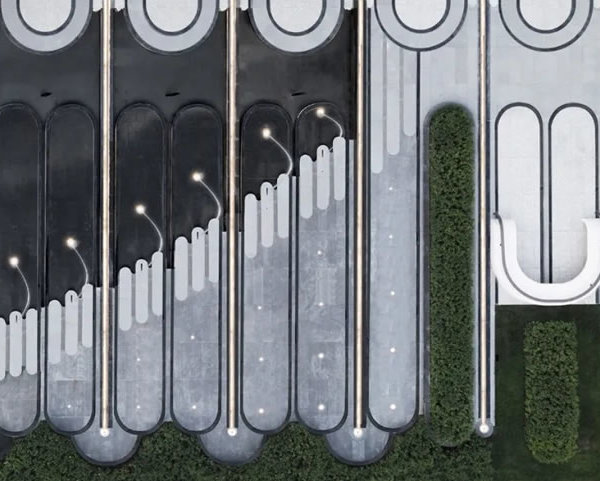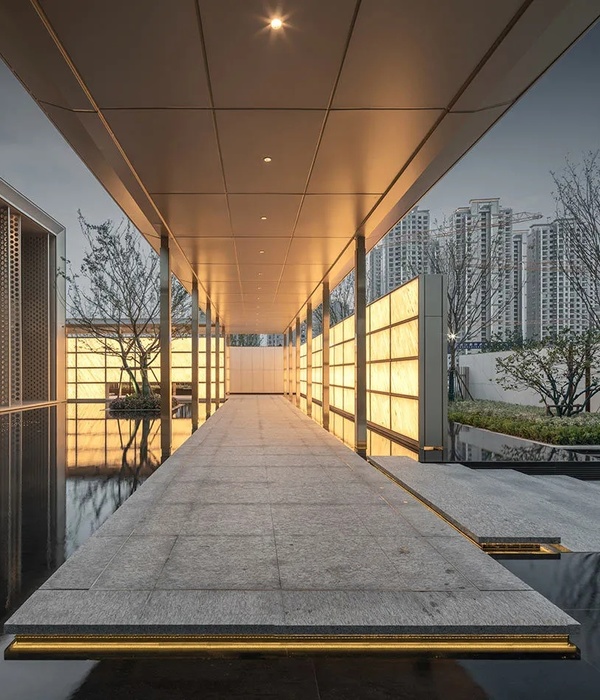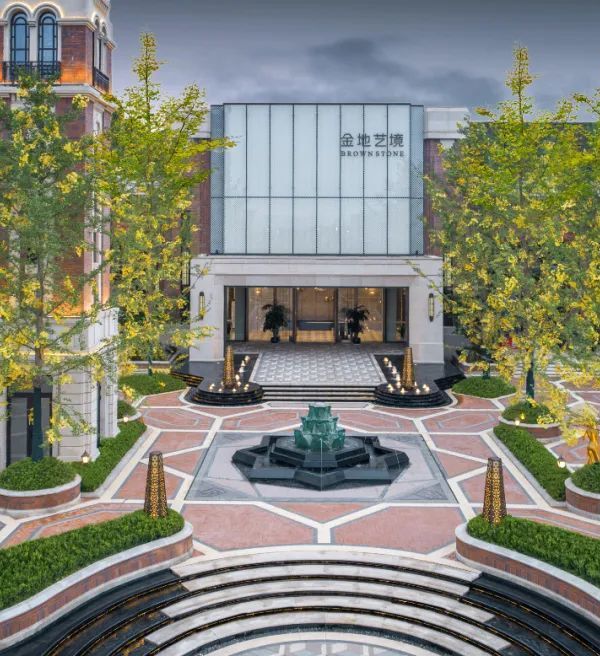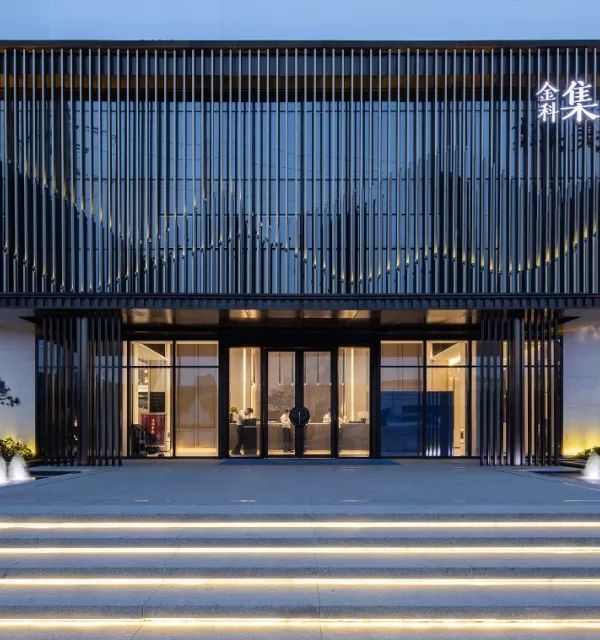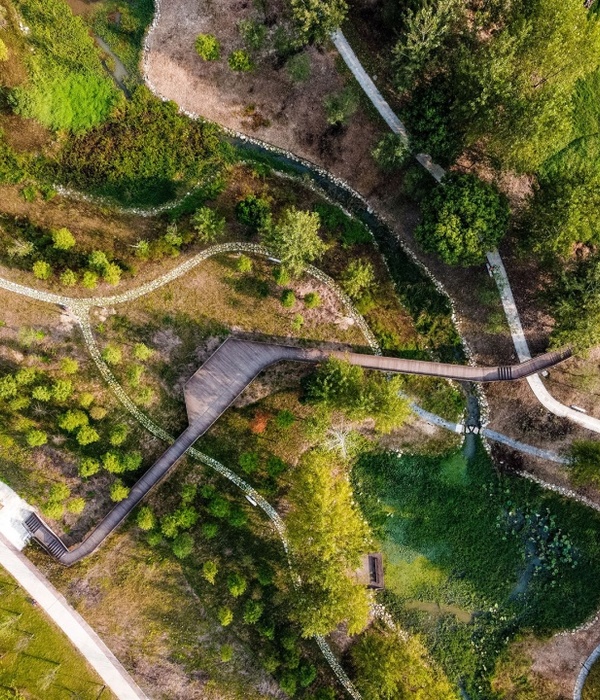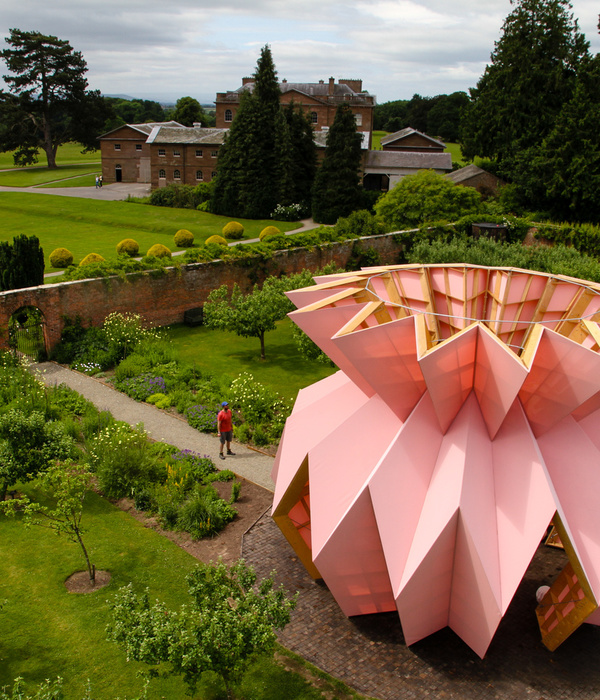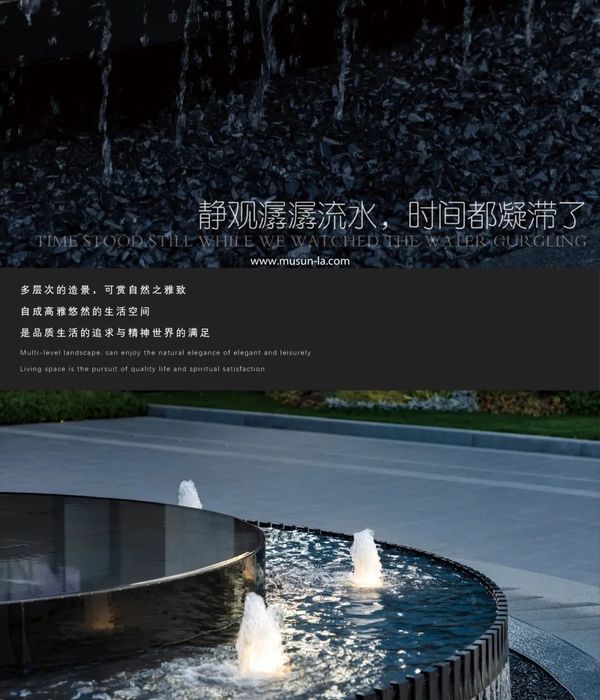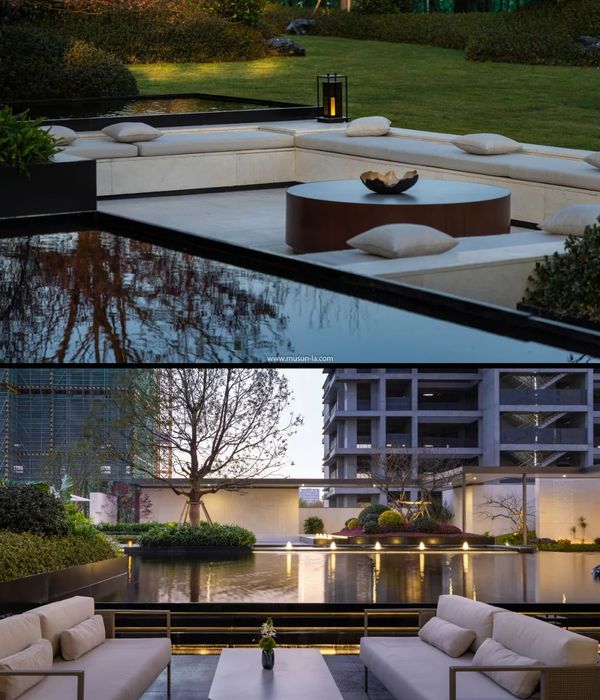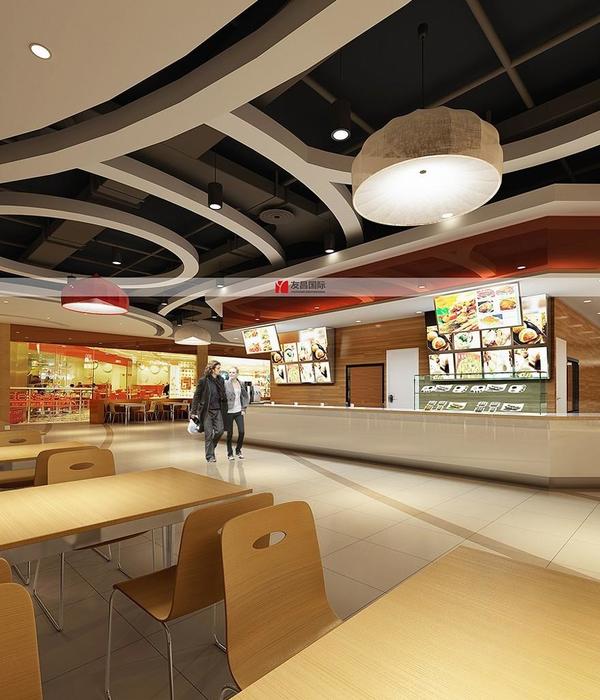来自
ASLA
Crosswinds Marsh Wetland Interpretive Preserve by
SmithGroup
项目概述
PROJECT STATEMENT
建立Crosswinds Marsh保护区的最初目的是为了弥补底特律大都会韦恩县机场扩建对湿地造成的破坏,如今它已成为人类和自然群落的珍贵宝藏。作为美国规模最大的能够自我维持的湿地减灾项目之一,已有20年历史的Crosswinds Marsh已经成为美国在生态恢复和环境设计方面的标准案例。值得注意的一点是,该项目从原先的农业和住宅用地中恢复了1000英亩的历史湿地,为数百种生活在当地的动植物物种重新建立了生态系统。
技术方面的设计在场地中实现了无水泵的水文功能,旨在为数百种动物提供必要的栖息环境。虽然保护区有意地限制了大众的直接进入,但作为宝贵的教育和社区资源,它仍然提供了广泛的允许人们观察的机会。战略性的场地设计还鼓励了对环境影响较小的娱乐活动,例如徒步、骑马、划船、钓鱼和观鸟等,在保护珍贵自然遗产的同时,也为每年成千上万的游客提供了大量了解自然环境的机会。
Originally created as recompense for wetland impacts during the expansion of Detroit Metropolitan Wayne County Airport, Crosswinds Marsh has transformed into a treasure valued by both human and natural communities. Celebrating its 20th anniversary as one of the largest self-sustaining wetland mitigation projects in the country, Crosswinds Marsh has become a national benchmark for ecological restoration and environmental design. Most notably, the project recreated ecosystems for hundreds of native flora and fauna species by restoring over 1,000 acres of historical wetland ecosystems from former agricultural and residential uses.
The technical design considered the pump-free hydrologic functions of the site to provide essential habitats that attract hundreds of animal species. While intentionally limiting direct human access, the site still serves as an invaluable educational and community resource with expansive permitted opportunities to observe critical habitat. The strategic site design also facilitated low-impact recreation like hiking, horseback riding, paddling, fishing and birding, leaving an indelible legacy that continues to offer numerous environmental learning opportunities for thousands of annual visitors to this day.
▲场地状况:Crosswinds Marsh的建造起初是为了弥补机场扩建造成的湿地损失,其所在场地自古以来就覆盖着湿草原和混合硬木森林沼泽,后来在一个多世纪前由于农业用途而将水排干。Existing Conditions: Crosswinds Marsh began as a project to mitigate the loss of wetlands caused by an airport expansion. Fittingly, the site was historically a wetland, part of an expansive complex of wet prairie and mixed hardwood swamp drained for agricultural use more than a century ago.
项目说明
PROJECT NARRATIVE
拥有20年历史的Crosswinds Marsh保护区起初是一个不被看好的项目。它原本是为了满足底特律大都会韦恩县机场(DTW)的扩建法规而创建的,并且有着十分远大的目标:为野生生物创造数百英亩的湿地保护区,同时为韦恩县的居民提供有益的公共资源。如今的Crosswinds Marsh已经成为美国面积最大的自我维持型湿地减灾项目之一,在构建文明社区和保护野生群落方面均做出了超乎预期的积极贡献。
在1990年代初,底特律大都会韦恩县机场开始了大规模的城市改良计划,其中包括修建一条新的侧风跑道。减灾计划提出的要求是,对首期工程进行修复,或者重新创造由于扩建而失去的467英亩湿地。韦恩县采取的做法是在场地之外的一个固定地点重新修复湿地,在达到法律规定的要求的同时,还降低了维护成本,同时为公众创造了一个新的娱乐和教育场所。
减灾项目往往位于偏远地区,很难进入公众的视野,但Crosswinds Marsh却恰恰相反。它成长为了城市中的一块资源宝地,为居民们提供了徒步、钓鱼、观鸟、起码、划船的场地,鼓励公众在宁静的自然环境中进行探索、沉思以及各种与自然有关的活动。在环境完整性、经济可持续性和社会价值方面,该项目均远远超出了最初的预期。
Crosswinds Marsh项目受到了全国范围的认可,并于2000年获得了ASLA百年荣誉奖。对该场地的案例研究也已经由美国景观园林基金会作为景观绩效系列(LPS)的一部分发表。2015年,该设计还获得了ASLA密歇根分会颁发的遗产传承荣誉奖。
设计与规划
Crosswinds Marsh所在的场地自古以来就覆盖着大面积的湿地,其中包括湿草原和混合硬木森林沼泽(后者分布在密歇根州东南部的大部分地区)。该场地在一个多世纪前由于农业用途而将水排干。为了开发最实用和最具成本效益的解决方案,在恢复栖息地的同时优化其休闲功能,该项目邀请了跨学科的专业团队进行合作:除了景观设计师之外,成员还包括土木工程师、湿地科学家、水生生物和渔业生物学家、植物学家以及休闲空间规划师等。
团队优先选择的一个方案是构建多样化的湿地和高地生态系统,包括开阔水面、淹没湿地和裸露湿地、森林湿地、湿草甸和原生高地等,并且在不使用水泵的情况下即可完成。设计团队利用计算机模型来分析湿地的水文条件,根据栖息地类型塑造陆地轮廓,并制定了积极的播种和种植计划。大面积的农业排水系统被替换为低水头土坝和带有混凝土溢洪道的防护堤以起到保水作用。该设计还有效改善了原先上游和下游的泛洪问题。
栖息地恢复
为了建立自给自足的湿地并为当地动植物创造不同类型的栖息环境,工人们在场地上种植了超过30万株当地水生植物、1万株幼苗和300英亩的湿地种子,形成了层层嵌套的栖息地结构。此外,原本在机场区域生长的三种稀有植物被迁移至Crosswind Marsh的一个20英亩的地块以帮助其繁殖和恢复。
几乎是紧接着,动物们便回到了它们的家园。苍鹭、鸭子、猫头鹰和鹈鹕飞回来了,燕子在凉亭周围和木栈道下筑巢,木鸭和绿头鸭也在巢箱中安起了家。一对白头鹰在头五年间筑巢之后,每年仍在繁殖。迄今为止,监测数据已经记录了244种鸟类,并且这一数字还在持续增长。许多著名的科学观鸟组织如ebird.org等都已将Crosswind Marsh列为全国热门观鸟地区。
各种大型和小型动物也在Crosswind Marsh找到了新家,包括鹿、麝鼠甚至是海狸(维恩县自1930年带以来从未发现过海狸),以及其他新迁移过来的物种。目前已经有30种哺乳动物,20种鱼类,21种爬行和两栖动物,以及70种蝴蝶和蜻蜓。公园自然学家Darrin Bauer回顾到:“20年前,当我第一次来到Crosswinds的时候,这里什么也没有。如今,我们被问得最多的一个问题是:你们是怎么把这么多动物带到这里来的?其实,它们就是自己来的。这真的非常神奇。”
作为社区资产的CROSSWINDS MARSH
Crosswinds Marsh从一开始的目的就是弥补失去的湿地栖息地,同时满足当地居民的休闲需要。在规划过程中,公民的参与被视为方案被接受和获得最终成功的关键性指标。
今天,Crosswinds Marsh每年为近5万名游客提供休闲、教育和展示服务,并且与韦恩县的公园系统整合在一起,促进了一系列低环境影响的娱乐活动,包括在超过5英里的小径上徒步、划独木舟、观鸟和骑马等。此外,保护区还发展可持续渔业,拥有底特律大都会区最受欢迎的渔场之一。
公园还会定期举办各类节庆活动,包括向新的游客介绍保护区、一年一度的植树活动、自然节和钓鱼比赛等。各种各样的社区团体,如徒步组织、观鸟爱好者、摄影师以及像
meetup.org
这样的线下社交媒体都能充分享受到公园带来的便利。
作为一个丰富的、可以栖居的露天教室,Crosswinds Marsh能够为广大居民、学校组织、童子军和市民组织提供宝贵的教育资源。两位全职博物学者将在全年为6000名参与者讲授15个展示课程。从水上木栈道进入的Screenhouse小屋提供了一个吸引人的互动教学场地。来自密歇根州的几所大学的研究人员、教授和学生也会定期访问Crosswinds Marsh以进行场地作业和其他研究。保护区可以作为一个持续的研究设施,供科学家们监测和收集用于指导未来湿地恢复项目的数据。
融入社区
为了庆祝保护区成立20周年,Crosswinds Marsh保护区的景观设计公司与公园管理层共同举办了摄影比赛,吸引了近200位参与者。借助社交媒体和位于底特律大都会韦恩县机场McNamara航站楼的展览,游客们得以了解和感受公园为当地带来的美丽景色、环境完整性以及社会价值。
公园的演进
随着时间的推移,Crosswinds Marsh会变得更加成熟和进步。本地植物将持续生长和蔓延,动物种群也在逐步壮大。谨慎的监控和强效的管理能够防止物种的入侵。美国自然保护协会密歇根州分会也已介入项目,帮助对已经成功恢复的生态系统进行入侵物种管理。人造木栈道和其他硬景观材料在天气的作用下将逐渐与自然环境融为一体。与此同时,考虑到不断增长的游客数量,可持续洗手间等公共设施也在逐步地进行建设。
Crosswinds Marsh凭借周全的协作性设计,成功地成为了重要的公共资产,同时又维护了其自然可持续系统的完整性。大部分游客设施都被设置在公园最便捷的区域,其余的大部分区域则完全服务于野生动植物。这项设计策略性地限制了人们进入关键栖息地的机会,使稀有的植物和动物可以顺利地繁殖和生长。
Crosswinds Marsh保护区的成功使其几乎不再是一个“项目”,而是一种永恒的存在。它已经发展为一个丰富的、生机勃勃的湿地系统,并将持续为自然世界以及从中获取生活和学习资源的社区带来积极的影响。
▲区域影响:Crosswinds Marsh在作为展示保护区的同时还创造了各种休闲机会,其对于当地居民以及野生种群的影响已经远远超出预期。Crosswinds Marsh为数以千计的迁徙鸟类提供了飞行路线中的重要落脚点。Regional Influence: From interpretive nature programs to recreational opportunities, the documented geographic influence of Crosswinds Marsh goes well beyond the local human and wildlife communities — it is a critical stop along a major flyway for thousands of migrant birds.
▲分区:A.秃鹰筑巢地,B.木栈道,C.独木舟道,D.马术道,E.钓鱼平台,F.栖息岛,G.徒步步道,H.保护区,I.木屋,J.濒危物种安置场,K.步道入口/野餐区/停车区,L.湿地植物园,M.湿地花园,N.湿地草甸,O.裸露湿地(深度1’-3’);P.水淹湿地(深度6” – 1’),Q.深水栖息地(深度5’- 17’)。Assets: Screen House,Bald Eagle Nesting Site, Boardwalks, Canoe Trail, Equestrian Trails, Fishing Platform, Habitat Island, Hiking Trail, Preservation Area, Screen House, Threatened & Endangered Species Relocation Plots, Trail Head, Picnic, Parking, Wetland Arboretum, Wetland Garden, Wet Meadow, Emergent Wetland (1’-3’ Deep), Submergent Wetland (6” – 1’ Deep), Deep Water Habitat (5’- 17’ Deep)
▲场地平面图:A.木栈道,B.独木舟道,C.马术道,D.钓鱼平台,E.栖息岛,F.观测塔,G.水上平台,H.木屋,I.步道入口/野餐区/停车区,J.湿地植物园,K.湿地花园,L.湿地草甸。Site Plan: Boardwalks, Canoe Trail, Equestrian Trails, Fishing Platform, Habitat Island, Observation Tower, Overflow Structure, Screen House, Trailhead, Picnic, Parking, Wetland Arboretum, Wetland Garden, Wet Meadow
▲物种多样性:“我们被问得最多的一个问题是:你们是怎么把这么多动物带到这里来的?其实,它们就是自己来的。这真的非常神奇。”——公园自然学家Darrin Bauer。Population Diversity: “One of the biggest questions I always get from people is, ‘How did you bring all these animals in here?’ They all came on their own. It’s really amazing.” – Darrin Bauer, Crosswinds Park Naturalist
▲创造栖息地:该方案重新建立了6个湿地植物群落,占地467英亩。此外还预留出了20英亩的栖息地,用于从机场区域迁移来的三种稀有植物的生长和繁衍。随着栖息地的优化,很快将有数目惊人的物种涌现。 Habitat Creation: The design reestablished 6 wetland plant communities encompassing 467 acres. 20 acres were set aside specifically for propagation and reestablishment of three rare plant species relocated from the airport site. With improved habitat, a great diversity of animals soon began appearing on their own—and in astonishing numbers.
▲鼓舞人心的娱乐活动:提供娱乐休闲空间从一开始便是减灾计划的一个重要部分。木栈道、小径、钓鱼码头和独木舟水岸等一系列设施鼓励游客通过沉浸式的、低环境影响的活动来体验自然。Inspiring Recreation: Providing access to recreation was a key component of the original mitigation plan. Amenities like boardwalks, trails, fishing piers and canoe launches encourage visitors to experience nature through a variety of immersive, low-impact activities.
▲观鸟:保护区中设置了一些限制人群进入的区域,以供鸟类繁殖、筑巢和喂养幼鸟。鸟类的数量已经大量增加,筑巢的鸟类包括白头鹰和沙丘鹤等等。Crosswinds Marsh目前已经被观鸟人群列为全国热门观鸟地区。 Birding: The design set aside areas with limited public access for birds to breed, nest and rear their young. Bird populations have thrived. Bald eagles and sandhill cranes have established nesting sites. Birders now consider Crosswinds Marsh a birding “hot spot.”
▲钓鱼:Crosswinds Marsh还为至少20种鱼类提供了栖息地,并已成为可持续的渔场和受欢迎的城市钓鱼景区。各类比赛和活动吸引了数百人的参与,其中包括经验丰富的渔民、儿童以及初学者。Fishing: Crosswinds Marsh also provides habitat for at least 20 species of fish. It has become a sustainable fishery and a popular urban fishing destination. Contests and events draw hundreds of people, including experienced fishermen, children and first-timers.
▲活动:Crosswinds Marsh在连接市民与户外空间上发挥着重要作用。地球日、免费钓鱼日和兴趣日等活动的举办为公民提供了享受和欣赏自然世界的新方式。Events: Crosswinds Marsh serves an important role connecting citizens with the outdoors. Events like Earth Day, Free Fishing Day and Hobby Day help introduce the public to new ways they can enjoy and appreciate the natural world.
▲教育:Crosswinds Marsh为各个年龄段的公民提供了丰富的生活教室,并由博物学家讲授课程,其面向的人群包括从幼儿园到8年级的学生、老年人、有视力障碍的公民、童子军和其他各类社区和团体。地理位置优越的Screenhouse小屋为教学提供了有趣的沉浸式教学场地。Education: Crosswinds Marsh provides a rich living classroom for all ages. Naturalists lead programs for K-8 classes, senior citizens, visually impaired citizens, scout troops and other community groups. The strategically sited Screenhouse pavilion provides an intriguing, immersive venue for programming.
▲研究:科学家在Crosswinds Marsh发现了大量可研究的对象。研究人员分析建模和设计策略,并将人工湿地与相似的自然系统进行比较。大学生可在此进行植物调查、水质测试和其他相关的现场工作。 Research: Scientists find much to study in the living laboratory of Crosswinds Marsh. Researchers analyze the modeling and design strategies, comparing a human-engineered wetland to similar natural systems. University students conduct plant surveys, water-quality testing and other research related field work.
▲融合的设计:随着时间的推移,自然环境和人工元素逐渐形成完美融合。本地植物持续生长和蔓延。动物们也已经找到了它们的栖居地。木栈道和其他建筑物也在气候的影响下散发出自然的光泽。 Integrated Design: As the years pass, the natural and manmade components are blending and aging beautifully. Native plantings have matured and spread. Animals have moved into areas expected and unexpected. Boardwalks and other structures have taken on a natural patina.
▲四季皆宜:在冬天,步道成为了全县滑雪爱好者和漫步者的目的地。All-Season: Walking paths become destinations for cross country skiers and snowshoers.
▲Crosswinds Marsh保护区已成为美国在生态恢复和环境设计方面的标准案例。Crosswinds Marsh has become a national benchmark for ecological restoration and environmental design.
PROJECT NARRATIVE
Currently celebrating its 20th anniversary, Crosswinds Marsh was a project few thought would succeed. Created for the Detroit Metropolitan Wayne County Airport (DTW) to meet regulatory requirements for expansion, it was an ambitious concept from the start—recreate hundreds of acres of wetland preserve for wildlife habitat, as well as develop a public resource that would benefit the residents of Wayne County. It has since become one the largest self-sustaining wetland mitigation projects in the nation, surpassing expectations for positive contributions to both civilized and wild communities alike.
In the early 1990s, DTW embarked on a large capital improvement program that included the construction of a new crosswind runway. Mitigation plans called for the phase 1 restoration or creation of 467 acres of wetlands lost to the expansion. By mitigating all of the wetlands at a single off-site location, the County met regulatory requirements, reduced maintenance costs, and created a new recreational and educational destination for the public.
While many mitigation projects are remote, often forgotten sites little known to the general public, Crosswinds Marsh is quite the opposite. It has grown to become one of the region’s most treasured resources, where residents can enjoy hiking, fishing, bird watching, horseback riding, paddling, naturalist programs and quiet reflection from the peaceful natural surroundings. It has vastly exceeded all expectations in terms of its environmental integrity, economic sustainability and social value.
The project achieved national recognition, receiving an American Society of Landscape Architects Centennial Honor Award in 2000. A case study on the site has also been published as part of the Landscape Architecture Foundation’s Landscape Performance Series. Most recently, the design received a Legacy Honor Award from the Michigan Chapter of ASLA in 2015.
DESIGN AND PLANNING
A majority of the site selected for Crosswinds Marsh had historically encompassed an expansive wetland complex of wet prairie and mixed hardwood forest that covered most of southeast Michigan. Much of this wetland complex was drained for agricultural use more than a century ago. To develop the most practical and cost-effective solutions for habitat restoration and recreation enhancements, an interdisciplinary team of professionals collaborated on the design. Led by landscape architects, the team also included civil engineers, wetland scientists, aquatic and fisheries biologists, botanists and recreation planners.
The preferred solutions resulted in a diverse wetland and upland ecosystem including open water, deep and shallow water submergent and emergent wetlands, forested wetlands, wet meadows and native uplands, which was accomplished without the use of pumps. The design team utilized computer modeling for calculating wetland hydrology, sculpted the land based on habitat types, and specified an aggressive seeding and planting program. Extensive agricultural drainage systems were removed, and a low head earthen dam and berms with a concrete spillway were constructed to contain the water within the site. The design also ameliorated previous problems with upstream and downstream flooding.
HABITAT RESTORATION
To establish self-sustaining wetlands and create a variety of habitats for native flora and fauna, workers planted more than 300,000 native aquatic plants, 10,000 seedlings and 300 acres of wetland seed, yielding a myriad of built habitat structures and nesting platforms. After three rare plant species were identified and mapped at the airport site, the plants were relocated to Crosswind Marsh in a 20-acre parcel set aside for their propagation and reestablishment.
Almost immediately, the animals returned. Herons, ducks, owls and pelicans flew in. Swallows built nests around the pavilion and under the boardwalk, while wood ducks and mallards took to the nesting boxes. A nesting pair of bald eagles set up home within the first five years and are still rearing young on an annual basis. To date, monitoring data has documented 244 bird species, a number that continues to grow each year. Prominent organizations like ebird.org now list Crosswinds Marsh as a national birding hotspot.
Mammals, large and small, have also found homes in Crosswinds Marsh including deer, muskrat and even beavers—a keystone species not seen in Wayne County since the 1930s. Other species have arrived, too: the current tally is 30 mammal species, 20 fish species, 21 reptile and amphibian species, and 70 species of butterflies and dragonflies. “When I first came to Crosswinds 20 years ago, there was nothing there,” remarks Park Naturalist Darrin Bauer. “One of the biggest questions I always get from people is, ‘How did you bring all these animals in here?’ They all came on their own. It’s really amazing.”
CROSSWINDS MARSH AS A COMMUNITY ASSET
From the beginning, Crosswinds Marsh was designed to replace lost wetland habitat and meet the recreational needs of area residents. Public involvement during the planning process was considered a key barometer of its acceptance and ultimate success.
Today, Crosswinds Marsh provides recreational, educational and interpretive opportunities for nearly 50,000 visitors annually. Now folded into the Wayne County park system, it offers an array of low-impact recreation including hiking on more than five miles of trails, canoeing, bird watching and horseback riding. Maintaining a sustainable fishery, it is one of the most popular fishing sites in the Detroit metropolitan area.
The park also offers numerous events and festivals to introduce the site to new visitors, hosting annual Arbor Day activities, a Nature Fest and fishing contests. Various community groups make ample use of the park, including hikers, horseback riders, birdwatchers, photographers and others who coordinate their own activities through clubs and social media sites like meetup.org.
As a rich, living outdoor classroom, Crosswinds Marsh serves as an invaluable educational resource for the general public, school groups, scout troops and civic organizations. Two full-time naturalists lead 15 interpretive programs for 6,000 participants throughout the year. The Screenhouse, a pavilion accessed by a boardwalk and surrounded by water, provides an appealing, interactive venue for class studies and programs. Researchers, professors and students from several Michigan-based universities regularly visit Crosswinds Marsh for field work and other studies. It also serves as an ongoing research facility for scientists to monitor and collect data, which will be used to guide future wetland restoration projects.
CELEBRATING WITH THE COMMUNITY
To mark the site’s 20th anniversary milestone, our firm teamed up with the park management to engage visitors through a photography contest that garnered nearly 200 entries to celebrate the positive impact of the park. Through press, social media and a curated exhibit at the DTW McNamara Terminal, visitors shared the beauty, environmental integrity and social value that the park brings to the region.
THE PARK’S EVOLUTION
Crosswinds Marsh is only improving with age. Native plants continue to mature and spread, and animal populations are thriving. Careful monitoring and tenacious management keep invasive species in check. Even the Michigan Chapter of the Nature Conservancy has partnered up to assist with invasive species management of this successfully restored ecosystem. Human-built boardwalks and other hardscape materials are weathering and blending with their natural surroundings. Sustainably designed restroom facilities are being built to meet increasing visitor demand.
Through thoughtful and collaborative design, Crosswinds Marsh has succeeded in providing an important public asset while maintaining the integrity of its natural sustainable systems. Most visitor amenities are contained within the most accessible areas of the park, while the majority of the acreage is preserved for wildlife habitat. The design strategically limits access to critical habitat areas where rare plants can propagate and animals can breed and raise their young.
As testament to its success, Crosswinds Marsh hardly looks like a “project” at all—it seems like it has been there forever. It has matured into a rich, vibrant wetland that benefits the natural world, as well as the community living with and learning from it.
{{item.text_origin}}


